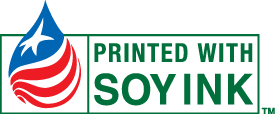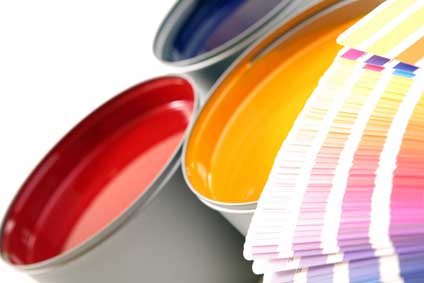

 |
|
|
Wet offset printing works off the premise that oil and water don't mix. Ink is oil based and a water fountain solution is used to moisten the printing plates so the printing images stay clean and crisp. Before it was popular we converted all of our offset printing inks from a petroleum base over to Soy. Soybean agriculture uses only 0.5 percent of the total energy needed to produce soy ink and almost half of all soybeans produced in America need no irrigation. As soybeans are growing they temporarily remove damaging carbon dioxide, a greenhouse gas, from the atmosphere. Soy ink is naturally low in VOCs (volatile organic compounds, chemical compounds that evaporate and react to sunlight) and its usage can reduce emissions causing air pollution. |
 |
|
Researchers at Western Michigan University have found that soy ink is removed more effectively from newsprint than petroleum ink during de-inking, resulting in less paper fiber damage and a brighter paper. In addition, the waste is not considered hazardous and can be treated more easily, completely and cost-effectively. Residue waste ink is considered a liquid industrial waste that requires proper disposal. Many newspapers and large commercial printers are recycling their ink by mixing black ink with unused color inks. This process reduces waste and results in a more cost-effective, efficient use of ink. |
|
.